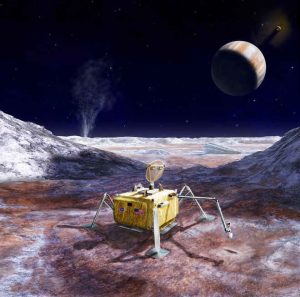Several times now I’ve written a post concerning recent news items dealing with what’s going on in humanity’s exploration of space. I’ve usually titled them ‘This Week in Space’ but I haven’t been doing them every week so what I’m gonna do is make it an official MONTHLY thing.
You may have heard about the first item I’d like to cover. It concerns the ongoing medical examination of NASA astronaut Scott Kelly after his one year assignment to the International Space Station and the comparison to his twin brother astronaut Mark Kelly. Ever since his return to Earth last March Scott has been subjected to perhaps the most extensive set of physical, mental and genetic testing ever conducted on a person.
A similar set of tests are also being carried out on Mark, who flew four shuttle missions but is now retired and who remained here on Earth during Scott’s year long mission. The comparison between the two sets of tests will give scientists their best ever look into the long term effects of living in a zero ‘g’ environment.
While the results are still coming in and being analyzed, some interesting differences have been noted. Perhaps the most troubling for the future of human spaceflight is the detection of reduced bone growth in Scott during the second half of his mission. His loss of bone strength has been noted before in other astronauts but the comparison between Scott and Mark’s bone tissue gives scientists their best measurement of just how much of a difference living in space makes.
Shortly after Scott returned to Earth one group of researchers noted a slight reduction in cognitive ability, the ability to think quickly and clearly. The scientists noted that the change was insignificant and should not effect a journey to Mars or another long duration mission.
Meanwhile genetic testing of the twin astronauts revealed that hundreds of genetic mutations had developed in their respective RNA sequences. The question is whether the increased number of mutations is due to different genes being activated in a space environment, a ‘Space Gene’ NASA officials called it, or are the differences due to the increased amount of radiation Scott received during his year in space.
NASA’s twin study of Scott and Mark Kelly is ongoing and we’re certain to learn more about the effects of weightlessness on the human body. I’m hoping that in another 10-15 years there will be another study of the medical effects of a low, that is lunar, gravity environment.
Another bit of NASA news concerns the initial design study for a possible lander probe mission to Jupiter’s moon Europa. As I sure you know, astronomers are rather certain that beneath Europa’s icy surface is an ocean of liquid water and liquid water means a good chance for life.
NASA is already in the process of developing an Europa flyby spacecraft that is intended to orbit Jupiter in such a fashion that it swings by Europa 45 or more times. Well an Europa lander would then be the next step logical in our search for life on that icy world. Below is an artists idea of what the Europa lander could look like.

And if you’d like to read more about the Europa lander from Space.com click on the link below.
http://www.space.com/35655-nasa-lander-jupiter-moon-europa.html
Finally a bit of fun. Astronaut Andreas Mogensen of the European Space Agency (ESA) recently spent six months on the International Space Station (ISS) studying Red Sprites and Blue Jets. These phenomenon are basically forms of lightning produced in thunderstorms that go up into space rather than down to the Earth. Doctor Mogensen has produced a little video describing and showing some of his results and rather than trying to explain further I think I’ll just insert a link to the YOUTUBE video and let him talk. Enjoy!
https://www.youtube.com/watch?v=r50Un4LPTM4&t=70s
I hope that works!

This is my first time pay a quick visit at here and i am truly
happy to read everthing at alone place.
Thanks for the comment and come back soon!
Bob L
This is a topic that’s near to my heart… Thank you!
Where are your contact details though?
Thanks for the comment and come back soon!
Bob L